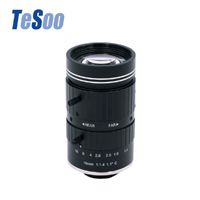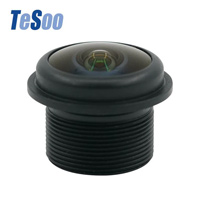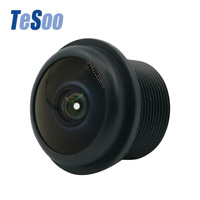The Structure Principle of Fisheye Lens and the Theory of Imaging Distortion
When the fish is observed close to the water surface, the viewing angle can reach a wide angle of nearly 180°. This phenomenon belongs to total reflection and reversible optical path in the optical principle.
Ⅰ. The structure and principle of fisheye lens
A fisheye lens is an extreme wide-angle lens, also known as a panoramic lens. It is generally considered that a lens with a viewing angle exceeding 180° is a fisheye lens, but in engineering, a lens with a viewing angle exceeding 140° is collectively referred to as a fisheye lens. In practice, there are also lenses with viewing angles that reach or even exceed 270 degrees. A fisheye lens is an anti-telephoto light group with a lot of barrel distortion. The front lens of this lens is parabolically protruding to the front, and the shape is similar to the eye of a fish, hence the name is "fisheye lens", and its visual effect is similar to that of a fish observing things on the water surface.
The ultra wide camera lens is a special lens, but when imaging, because the scene in real life has a fixed shape, and the picture effect produced by the fisheye lens is beyond this category, it requires a suitable model design to calculate the exact location of the image point.
Due to the large radius of curvature of the front surface of the fisheye, if the convex front surface of the fisheye and the water in front of the eyes are regarded as a whole as a negative lens, the lens will have a large absolute value of negative power.
Drawing on the principles of bionics, the fisheye lens is a breakthrough in its field. Humans draw on the visual principle of fish looking up at the hemispheric airspace above the water surface, use optical engineering technology to design a fisheye lens, and use it to image the scene image of the hemispherical or even super-hemispherical airspace.
In order to make the incident light intensity large enough, the front surface of the front lens is improved to be convex and the curvature of the back surface is correspondingly increased to ensure that the original power remains unchanged, so as to form a meniscus lens.
The meniscus lens is used as the first lens, and a certain number of lenses are added behind it to form a lens group to ensure that the first lens can focus well. The general structural feature of fisheye lens is that the focal power of the front group of the lens is negative, and the focal power of the rear group is positive, so as to increase the working distance of the same focal length and different types of lenses. Fisheye lenses have the characteristics of wide angle and short focal length.
Ⅱ. The theory of fisheye lens imaging distortion
In the traditional optical principle, due to the limitation of the imaging angle of the Gaussian principle, the size of the space that can be imaged is extremely limited. However, in the fisheye lens we discussed, in order to break through the limitations of imaging, the fisheye lens introduces distortion and compresses the diameter space to achieve wide angle no distortion imaging.
Ordinary optical systems generally follow object image similarity and strive to perfect this similarity. However, the fisheye lens does not satisfy the principle of pinhole imaging and is a type of dissimilar imaging. For the fisheye lens imaging formula, it should satisfy that the domain of the image field in the view range is continuous as a fisheye lens projection function.
Popular Camera Lens
Hot Camera Lens Articles

 English
English 

